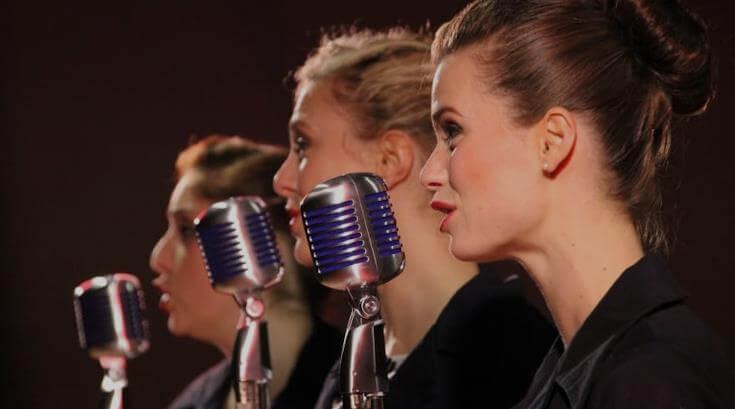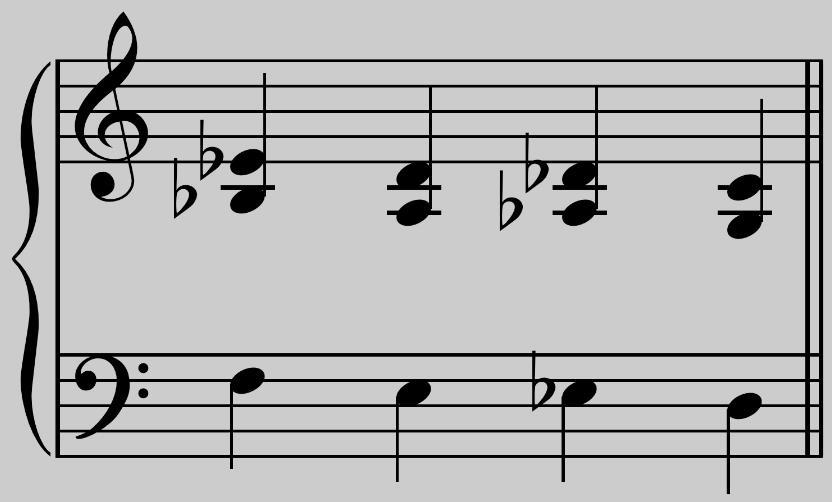Vocal Harmonies

Vocal harmonies, also known as backing vocals, are secondary voice melodies that unify or complement the main track. They emphasize and embellish the main line of singing, adding depth to what the singer is performing.
Basic intervals in vocal harmonies
Often, when creating background vocals, major musical intervals such as octaves or thirds are used. To create expressive harmony, it is enough to sing an octave or third higher or lower than the main part.
Vocalization on an octave
This is a basic type of backing vocal that complements the main melody, moving it to a higher or lower register. When creating such harmony, an interval is chosen that repeats the main melody. The octave is a popular choice of interval. The main thing is the correct combination of main and backing vocals so that they sound harmonious and not merge.
Harmonization by third
This is one of the most attractive methods of creating harmony. This technique is reminiscent of the technique in guitar music, where the solo is doubled by a second guitar playing the third. This harmonization enhances the contrast between the lead and backing vocals and makes the melody stand out. For added dynamics, you can add slight variations to the backing vocals.
Playing the third requires skill and understanding. To make things easier, you can convert the melody to MIDI format and transpose it up or down a few semitones. After this, some notes may not fit with the main vocal, but this can be easily corrected using software.
Vocal harmonies beyond basic intervals
Not only the octave and third are suitable for creating vocal harmonies. Many complex harmonies are based on a song’s chord progression, with lead and backing vocals forming a variety of intervallic patterns. In this way, vocal lines can form triads or even full chords.
Selective harmonies
While octave and third are popular intervals, not every singing line is ideal for backing vocals. Sometimes the leading line of singing may include transitional tones or embellishments that go beyond the main key of the composition. This can be compared to guitar transitions, where the musician adds nuance to a standard chord progression.
When recording, experienced singers often use intuition to add unique elements to a melody. If using backing vocals an octave or third is not suitable, it is recommended not to re-record the main part. Instead, you can use selective harmonization, emphasizing certain areas of the voice. This technique is especially popular in rap and hip-hop.
Harmonious vocal lines
Another approach to creating background vocals is to write a self-contained harmonic line that runs parallel to the main singing line. The main and additional melodies must be synchronized without creating disharmony. When taking this approach, consider:
- Backing vocals should be such that they can be easily performed both on stage and in the studio;
- Additional vocals should be in harmony with the main melody so as not to throw off the singer.
Try to avoid unnecessary elements and sudden jumps in the melody. When creating a new harmony line, build on the key notes of the lead vocal, adapt to other instruments, and look for unique approaches to allow the background vocals to have their place in the composition.
Changing tempo and rhythm
The main method for creating backing vocals is to control the tempo and rhythm of the melody. Depending on the mood and nature of the composition, you can add a slowed down or, conversely, accelerated second line of voice. Listen to your preferences and take into account the features of the track. For example, if the lead singing line has a moderate tempo, you can liven up the arrangement with dynamic backing vocals using separate harmonies.
Variability of timbres
Another way to enrich a vocal arrangement is to use performers with different voice tones. In some cases, certain parts sound best when sung by tenors or baritones, even if the part itself is basic octave singing.
Try combinations of different voices, for example, mixing tenor and bass, falsetto and baritone. Involve various members of the team in the recording or supplement the male part with a female voice. Different combinations can give a track uniqueness and depth.










